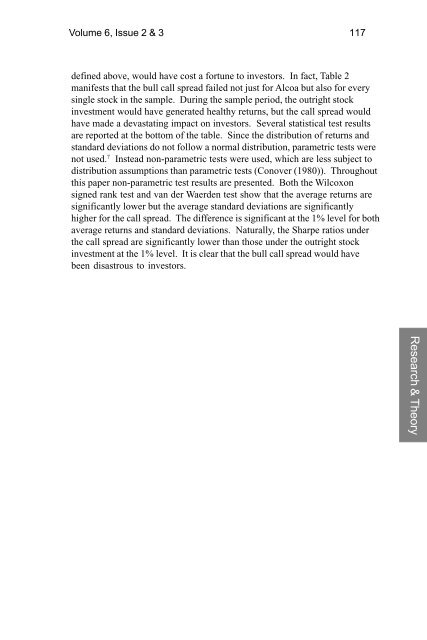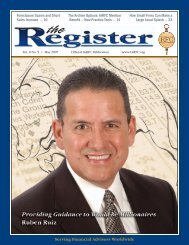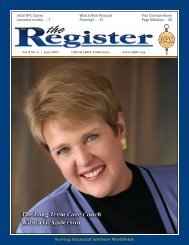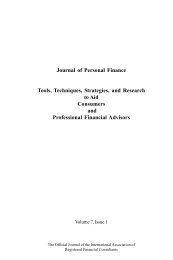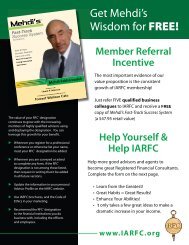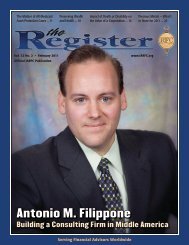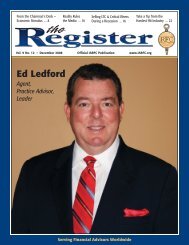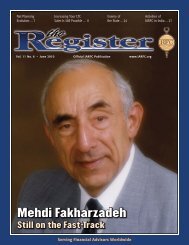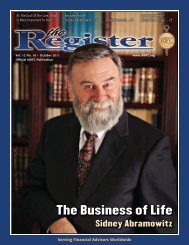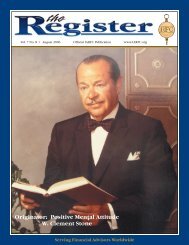3433-vol. 6 issue 2-3.pmd - iarfc
3433-vol. 6 issue 2-3.pmd - iarfc
3433-vol. 6 issue 2-3.pmd - iarfc
Create successful ePaper yourself
Turn your PDF publications into a flip-book with our unique Google optimized e-Paper software.
Volume 6, Issue 2 & 3 117<br />
defined above, would have cost a fortune to investors. In fact, Table 2<br />
manifests that the bull call spread failed not just for Alcoa but also for every<br />
single stock in the sample. During the sample period, the outright stock<br />
investment would have generated healthy returns, but the call spread would<br />
have made a devastating impact on investors. Several statistical test results<br />
are reported at the bottom of the table. Since the distribution of returns and<br />
standard deviations do not follow a normal distribution, parametric tests were<br />
not used. 7 Instead non-parametric tests were used, which are less subject to<br />
distribution assumptions than parametric tests (Conover (1980)). Throughout<br />
this paper non-parametric test results are presented. Both the Wilcoxon<br />
signed rank test and van der Waerden test show that the average returns are<br />
significantly lower but the average standard deviations are significantly<br />
higher for the call spread. The difference is significant at the 1% level for both<br />
average returns and standard deviations. Naturally, the Sharpe ratios under<br />
the call spread are significantly lower than those under the outright stock<br />
investment at the 1% level. It is clear that the bull call spread would have<br />
been disastrous to investors.<br />
Research & Theory


